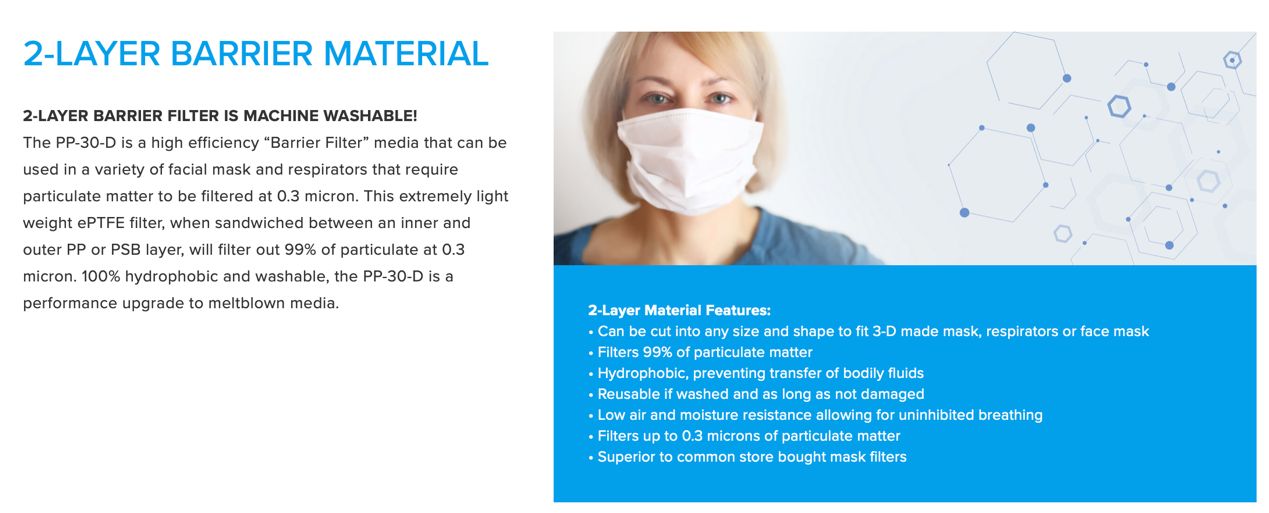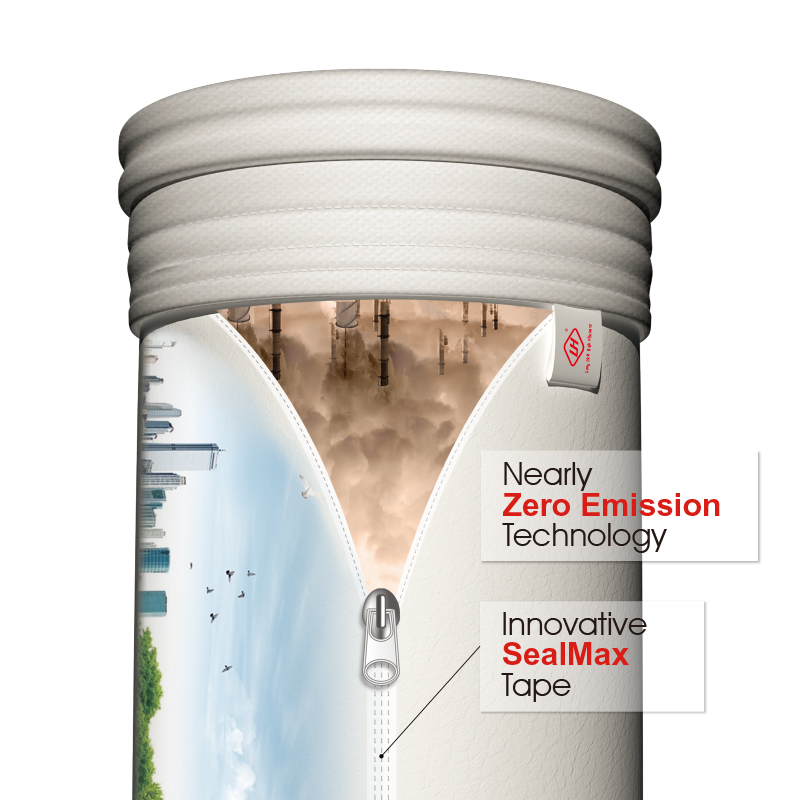Improving aircraft availability with alternative sealants.
Aircraft design and construction demands careful selection of the right materials to meet performance and safety requirements while optimizing the combination of material characteristics and properties. The choices engineers make have a significant impact on not only the functionality of the airframe, but also the maintainability and operational performance of an aircraft throughout its service life. Pure Ptfe Membrane

A key priority of the aircraft operator is aircraft availability. To meet this priority, maintainers work to maximize the number of aircraft available to meet the scheduled operational requirement, and the aircraft not included in the operational requirement are available for unscheduled, scheduled, or preventive maintenance or servicing.
A key determinant of aircraft availability is the amount of time spent maintaining the aircraft, typically in the form of inspection, servicing, or repair, which may entail the removal and replacement of components. While many maintenance actions might be performed from the interiors of larger aircraft, a wide range of tasks require opening or removal of exterior access panels (particularly on fighter aircraft), which are frequently sealed using form-in-place (FIP) seals. FIP seals are typically created using wet sealants, and removing panels installed with them usually involves scraping out sealant and prying up the panel, frequently damaging the seal and possibly the panel.
Operational needs frequently conflict with the time required to repair or replace a damaged FIP seal, forcing a compromised seal to be left in place until the next major maintenance event, which might be accomplished at a significantly later date. As a result, components within a panel cavity with a damaged FIP seal are at risk for damage from water or fluid intrusion. Additionally, improperly formed FIP seals may have dry spots from sealant squeeze-out during initial application, with panel-to-structure contact contributing to damaged protective coatings that may lead to corrosion. Without the protective barrier of a FIP seal, surfaces in contact are particularly susceptible to damage from vibration- induced fretting, which can be significant, especially on helicopters. Fretting tangibly downgrades the surface layer quality, producing increased surface roughness and micropits, which reduces the fatigue strength of the components. Ultimately, repairing corrosion damage will require downtime, labor, and material.
Like any maintenance task, the installation and repair of FIP seals have a direct impact on aircraft availability. The time to prepare, mask, mix, apply, and clean up is lengthened further by the cure time, which may vary widely due to temperature and humidity. Finally, there is the opportunity cost of lost work that the maintainer could otherwise have accomplished instead of the FIP seal work.
The most commonly used material for FIP seals is a two-part polysulfide sealant (such as B1/2, B2, etc.), which is frequently used in applications such as structural assemblies requiring a fay surface seal.
Polysulfide is an effective sealant to conform to irregular surfaces with strong adhesion. Although applying a release agent to the mating surface enables polysulfide to be used in creating a FIP seal, removal of panels for the first time may still be difficult and result in a damaged seal from digging out sealant and prying up the panel. In some cases, damage to the panel, structure, or protective coatings may also occur during panel removal.
Despite the effectiveness of polysulfide sealants, their handling and working properties beg for alternatives that minimize the tradeoffs. Fortunately, there are other choices available, including sealant tapes. One such product is W. L. Gore and Associates’ SKYFLEX™ Aerospace Materials. SKYFLEX tapes and die-cut gaskets are made from pure expanded polytetrafluoroethylene, or ePTFE, based on the same material used in Teflon.
ePTFE has a variety of characteristics that make it suitable for aerospace sealant applications:
Several products on the market use variations of PTFE, but SKYFLEX remains unique in its formulation and properties. Unlike other tape sealants using PTFE as a layer or a coating, it is pure PTFE throughout.
Gore’s engineering of ePTFE ensures a combination of wear characteristics to optimize tensile strength and tear propagation resistance throughout the wear cycle while maintaining sealing properties for multiple panel remove/install cycles. Throughout the service life of a SKYFLEX seal, its compression seal qualities do not change. It will not squeeze out, dry out, or degrade due to exposure to aviation fluids, provided the appropriate variant is applied.
There are several variants of ribbed/flat ePTFE tapes or die-cut gaskets that are available to address a variety of application requirements:
In addition to its performance as a sealant, ePTFE tape offers:
A SKYFLEX material commonly used as a FIP seal on aircraft such as the F-16 is the ribbed sealant tape. It is available in a wide range of configurations and readily conforms to the application surface with zero cure time or hazardous waste. Once installed, PTFE’s inherently non-stick qualities ensure that access panels are easily removed for inspection, servicing, or repair, enabling quick reinstallation of a fully effective seal. ePTFE tapes and gaskets play a role in corrosion reduction by sealing, isolating, and protecting painted surfaces with a tough, low-friction sealing barrier. The ePTFE seals are more durable and less susceptible to damage than polysulfide-based FIP seals, and are easily repaired.
The diagram shows approved application areas for use of SKYFLEX on the F-16, with blue denoting recommended areas for the 100 and 110 Series (flat and ribbed) tapes, and yellow highlighting the use of 720 Series tape or gaskets in areas with exposure to fuel or other hydrocarbons such as hydraulic fluid.
For environments with more aggressive chemical exposure, Gore has introduced 730 Series tape, which resists hydraulic fluids such as Skydrol with sealing and wear properties similar to those of other SKYFLEX variants.
A time analysis comparing SKYFLEX with polysulfide provides a more analytical assessment of ePTFE tape benefits. To apply polysulfide as a FIP seal, mixing the polysulfide is but one step, along with masking, panel fit work, and application of a release agent to prevent the sealant from adhering to one of the mating surfaces. Following these typical steps for applying polysulfide results in about two hours for a panel remove/install cycle, with the breakdown presented in the table on page 90.
Typical panel installation using polysulfide takes up to 120 minutes for each removal/install cycle, plus 6 hours to 30 hours of cure time.
Installing ePTFE tape for the first time will require the same degree of surface prep, but no masking or mixing. Total prep and initial application time of the ePTFE material is about 65 minutes, with no cure time.
Once installed, the ePTFE seal will significantly shorten cycle time for subsequent panel removals by ensuring easy removal and reinstallation while maintaining full seal integrity.
For a comparison of cure times between B ½ and ePTFE tape, the Technical Order presenting Tack-Free and Fly-Away times is presented above.
Beyond the time benefits, a cost comparison for a sample installation to seal a small panel with a perimeter of approximately 2 linear feet is presented. To put the working stock on the shelf, a user might buy B ½ in either the single use self-contained SemKit® or a pint can, or purchase SKYFLEX in a typical 100-ft roll. Installation of this small panel would require one SemKit® or about two feet of SKYFLEX.
When all the attributes of ePTFE tape are totaled, the net expenditure ends up about the same, but with a significant payback in benefits:
There are many factors when choosing material for use as a form-in-place sealant on aircraft. In addition to physical properties, the material’s characteristics in application and service performance also require consideration. The optimal combination of properties can not only satisfy technical requirements, but also address the need to positively impact aircraft maintainability, improving aircraft availability and long term life cycle costs.
About the author: Christopher S. Mardis (Colonel, USAF Retired) is president of CSM Solutions LLC, which provides logistics and technical management consultant services. He is an aircraft maintenance and military logistics professional with more than 26 years of active-duty military service. He can be reached at christophermardis22@gmail.com.
Teflon is a registered trademark of the Chemours company. Skydrol is a registered trademark of Eastman Chemical. SemKit® is a registered trademark of PPG Industries.

Air Permeable Ptfe Film Check out more from this issue and find you next story to read.